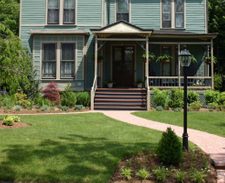5 Universal Design Needs for Aging in Place
Updated: May 23, 2016
If you’d like to grow older at home (known as aging in place), you’ll need to consider these universal design elements for the easiest transition.
 Aging in place, universal design, age-friendly communities: today’s boomers are quite interested in these buzz words, especially as they’ve watched their own parents transition to assisted living or nursing homes that they’d rather not call home. Just how interested are they? A 2011 AARP survey revealed that more than half of boomers view aging in place as a major long term care (LTC) concern, 49 percent supported the availability of LTC services for aging in place, and 59 percent strongly supported redirecting nursing home funds towards home- or community-based services instead.
Aging in place, universal design, age-friendly communities: today’s boomers are quite interested in these buzz words, especially as they’ve watched their own parents transition to assisted living or nursing homes that they’d rather not call home. Just how interested are they? A 2011 AARP survey revealed that more than half of boomers view aging in place as a major long term care (LTC) concern, 49 percent supported the availability of LTC services for aging in place, and 59 percent strongly supported redirecting nursing home funds towards home- or community-based services instead.
The 78 million plus boomers have a powerful voice: Aging in place is now a hot industry, with products, programs, and professionals designed for consumers who want to stay home. Proof positive—Google “aging in place” and you’ll get an impressive 105 million hits. It’s a dynamic niche, and one that’s evolving as quickly as the boomers and seniors determined to stay home.
Along with aging in place, universal design is becoming more of a household term. Essentially, it’s about building or modifying places and spaces—both public and private—to accommodate people of all ages and abilities. More than just an architectural concept, universal design is a win-win for sandwich generation boomers caring for aging parents and their children at home, for grandparents raising grandchildren and great-grandchildren, and for all who are facing the challenges of caring for a loved one with Alzheimer’s or other chronic diseases.
Whether your family needs the support now or down the road, universal design features are a good long-term investment for the home itself. So what does an age-friendly home look like? AARP.org outlines the most important elements of universal design:
• No-step entry: You should have at least one step-free entrance (either at the front, back, or side of the house) so everyone, including wheelchair users, can enter the home easily and safely.
• Wide doorways and hallways: A doorway that is at least 36 inches wide is great when you’re bringing home a new mattress or couch, but it’s even better when someone you care for, or a regularly visiting friend or family member, is in a wheelchair. Also, hallways that are 42 inches wide are good for multigenerational family members with varying “mobilities.”
• One-floor living: Access to essential rooms without the use of stairs makes life more convenient and safe for residents ages 0 to 100.
• Easily accessible controls and switches: A person in a wheelchair can reach light switches that are 42-48 inches above the floor. Thermostats should be placed no higher than 48 inches off the floor, and electrical outlets 18-24 inches off the floor. Keep these measurements in mind when modifying your home.
• Easy-to-use handles: Consider replacing twist/turn doorknobs and faucets with lever-style handles for (painless) ease of use.
Ready to take aging in place and universal design to the next level in your home? Contact a Certified Aging in Place Specialist via the National Association of Home Builders, or find ways to integrate the features listed above.














